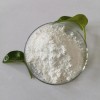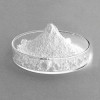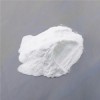





chemical
Purpose 1
Pharmaceutical intermediates, chemical raw materials, and food additives. Dihydroxyacetone, as a pharmaceutical intermediate, can synthesize some drugs for cardiovascular diseases; Dihydroxyacetone can be applied in cosmetics, which can prevent excessive evaporation of skin moisture, moisturize and sunscreen the skin, and prevent ultraviolet radiation
summary
Dihydroxyacetone is a naturally occurring ketose that is biodegradable, edible, and non-toxic to the human body and environment. It is a multifunctional additive that can be used in the cosmetics, pharmaceutical, and food industries.
Dihydroxyacetone
The chemical name of dihydroxyacetone (DHA) is 1,3-dihydroxy-2-acetone, which is a commonly used ingredient in cosmetics and has functions such as skin moisturizing, self tanning, and hair coloring. Currently, DHA is not within the scope of the Cosmetic Regulation (EC) No. 1223/2009 of the European Union.
In 2008, the Scientific Committee on Consumer Safety (SCCS) of the European Union received a set of application materials from companies to support the safety of DHA as a cosmetic ingredient. The research data shows that DHA with a concentration not exceeding 10% is safe to use as a sun simulating agent in cosmetics. In addition, DHA with a concentration no more than 14% is safe to use as a suntan imitation in spray cosmetics.
In May 2019, SCCS received another application to evaluate the safety of DHA with a concentration not exceeding 6.25% as a hair dye when used in resident (non oxidizing) hair dye cosmetics.
According to the safety evaluation data of toxicokinetics, skin irritation and sensitization, acute toxicity, Reproductive toxicity, mutagenicity, carcinogenesis, etc. provided by the enterprise, the European Scientific Committee on Consumer Safety (SCCS) has reached the following conclusions after evaluation:
DHA, with a concentration not exceeding 6.25%, is safe to use as a hair coloring ingredient in stationary (non oxidizing) hair coloring cosmetics.
DHA with a concentration of no more than 6.25% is considered safe when it is used as a resident (non oxidizing) hair coloring cosmetics for hair coloring, together with black lotion or face cream with a concentration of no more than 10% DHA.